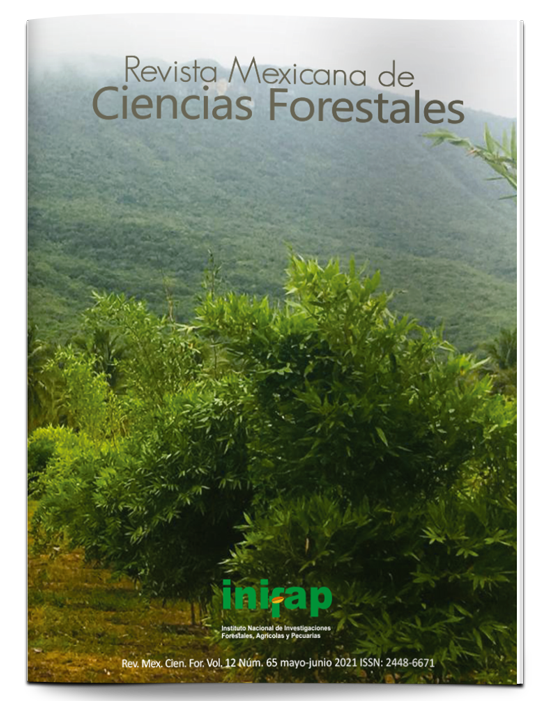Planting of four bamboo species established in the dry tropics of the state of Michoacán, Mexico
DOI:
https://doi.org/10.29298/rmcf.v12i65.788Keywords:
Growth and development, Guadua sp., commercial plantations, survival, irrigation, exotic speciesAbstract
Bamboo is cosmopolitan, of Asian origin, which offers enormous advantages of use due to its rapid growth and resistance to extreme environmental conditions. In the present work, the following were proposed as objectives: to evaluate the survival and growth of four bamboo species established in conditions of the dry tropics of the state of Michoacán; and to compare the increases (IMA) in height and diameter with other tropical species used in commercial plantations in the entity. The evaluated species were: Guadua aculeata, G. inermis, G. amplexifolia and G. angustifolia. Prior to the establishment of the plantation, a fallow and tracing was carried out. A completely randomized design was used, with four treatments (4 species) and 4 replications per treatment. Each experimental unit consisted of 25 plants, (100 plants per species). The assessed variables were: total height (At), diameter of the stem base (DBT), and survival. At 400 days, G. inermis reached the highest survival (99 %), and growth in at and DBT, respectively with an average of 2.12 m and 21.27 mm, compared to the other species. The IMAA of G. inemis did not exceed the increase shown by Gmelina arborea, Tectona grandis, Acrocarpus fraxinifolius and Cedrela odorata, however, it surpassed those reported for T. grandis and Eucalyptus camaldulensis in Nuevo Urecho and Buenavista municipalities, state of Michoacán. The results of the development of G. inermis show a good adaptation to the conditions of the planting site, with a tendency to a greater growth in height as well as in diameter, during the following years.
Downloads
Published
How to Cite
Issue
Section
License
The authors who publish in Revista Mexicana de Ciencias Forestales accept the following conditions:
In accordance with copyright laws, Revista Mexicana de Ciencias Forestales recognizes and respects the authors’ moral right and ownership of property rights which will be transferred to the journal for dissemination in open access.
All the texts published by Revista Mexicana de Ciencias Forestales –with no exception– are distributed under a Creative Commons License Attribution-NonCommercial 4.0 International (CC BY-NC 4.0), which allows third parties to use the publication as long as the work’s authorship and its first publication in this journal are mentioned
The author(s) can enter into independent and additional contractual agreements for the nonexclusive distribution of the version of the article published in Revista Mexicana de Ciencias Forestales (for example, include it into an institutional repository or publish it in a book) as long as it is clearly and explicitly indicated that the work was published for the first time in Revista Mexicana de Ciencias Forestales.
For all the above, the authors shall send the form of Letter-transfer of Property Rights for the first publication duly filled in and signed by the author(s). This form must be sent as a PDF file to: ciencia.forestal2@inifap.gob.mx
This work is licensed under a Creative Commons Attribution-Noncommercial 4.0 International license.







